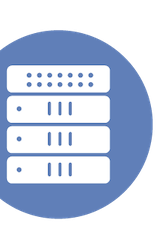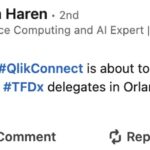In this video, Jim Czuprynski and Alastair Cooke share their reactions to Qlik Answers after trying out the product as part of a Tech Field Day project. Qlik Answers, an AI-powered chat assistant, simplifies data querying by effortlessly importing complex documents and providing accurate, transparent answers. Its logging and attribution features enhance trust, while its potential to support structured data makes it accessible to non-technical users.
Pure Storage Fusion V2: Shifting From Siloed to Cloud-Focused Storage
Jim Czuprynski discusses the latest iteration of Pure Storage’s platform, Fusion V2, highlighting its transition from traditional siloed storage solutions to a more integrated, cloud-focused approach. He explains how this advancement supports streamlined operations and enhanced scalability, aligning with current enterprise needs for agility and efficient data management. For further insights from Cloud Field Day 24, follow Jim Czuprynski’s articles on LinkedIn Pulse.
HPE: Optimizing Hybrid Cloud For Success
In his latest LinkedIn article, Jim Czuprynski discusses the strategic approaches enterprises can adopt with HPE technologies to optimize their hybrid cloud environments for enhanced performance and efficiency. He examines the integration of advanced analytics and AI tools provided by HPE, illustrating how they can streamline operations and drive business success. For more insights from Cloud Field Day 24, follow Jim Czuprynski’s ongoing coverage on LinkedIn Pulse.
MCPs, AI, & Fortinet: Remember When We Only Worried About Passwords Matching Logins?
Jim Czuprynski explores the evolving landscape of cybersecurity, discussing the impact of MCP, artificial intelligence, and Fortinet technologies on security practices that were once solely focused on matching passwords with logins. He highlights how these advanced tools are reshaping defense strategies and security paradigms, stressing the need for organizations to adapt to these changes. For additional insights from Cloud Field Day 24, follow Jim Czuprynski on LinkedIn Pulse.
Oxide: The Guys in the Garage Are Doing OK
Jim Czuprynski’s latest LinkedIn article, “Oxide: The Guys in the Garage Are Doing OK,” shines a spotlight on Oxide Computer Company’s innovative approach to reimagining server architecture, highlighting their progress and the potential disruption they could bring to the industry. In his analysis, Czuprynski provides an insightful overview of Oxide’s unique blend of hardware and software solutions designed to streamline complex data center operations. For additional insights from Cloud Field Day 24, follow Jim Czuprynski on LinkedIn Pulse.
The Evolution of Cloud at Cloud Field Day 24
Cloud Field Day 24 is back in San Francisco on October 22nd and 23rd, bringing the brightest minds in enterprise cloud together for two days of innovation, insight, and live demos.
Glean Insights & Value from Unstructured Data With Qlik Answers
In a recent article by Jim Czuprynski, he explores the capabilities of Qlik Answers, a tool designed to help organizations extract meaningful insights from unstructured data. The article highlights how Qlik Answers uses advanced analytics and AI to simplify data processing, ensuring businesses can make informed decisions quickly. For more coverage of similar topics, check out Jim’s blog!
Qlik Connect 2025: Youthful Vibes, Optimism Abounding
At the Qlik Connect 2025 event, Jim Czuprynski reports a noticeable atmosphere of enthusiasm and youthful energy, highlighting the forward-looking optimism that defines the current landscape. Industry leaders and newcomers alike shared insights and expectations for the future, underlining the significant role of innovation and technology in driving progress. For more insights and coverage from the event, you can follow Jim Czuprynski’s series on LinkedIn Pulse.
Qlik Connect 2025: Answers For Agentic AI
Jim Czuprynski recently discussed the implications of agentic AI following the Qlik Connect 2025 event, highlighting how these technologies are set to transform enterprise decision-making processes. He outlines the potential integration challenges and benefits for business intelligence systems, placing a special emphasis on predictive analytics and machine learning enhancements. For additional insights and discussions by Jim Czuprynski, explore his coverage on LinkedIn Pulse.
Phison: Where Have You Guys Been Hiding?
Jim Czuprynski provides an insightful overview of Phison’s notable yet under-the-radar advancements in the world of data storage technology. He emphasizes Phison’s role in driving performance enhancements and storage innovations, which have largely gone unnoticed in wider industry discussions. For additional insights into AI Infrastructure Field Day 2, read more from Jim Czuprynski on LinkedIn Pulse.
Juniper: Add Apstra, Ad Astra
Jim Czuprynski offers an insightful analysis on Juniper’s strategic acquisition of Apstra and its implications for advancing their network management capabilities, particularly with automation and data center operations. He explores how this integration enhances Juniper’s existing portfolio and positions the company to better navigate the evolving landscape of network technology. For additional insights from AI Infrastructure Field Day 2, follow Jim Czuprynski’s coverage on LinkedIn Pulse.
Qlik Connect 2025 Keynote Live Blog – Day Two
Tech Field Day heads to Qlik Connect May 13 through May 15, providing videos, interviews, behind the scenes footage, and of course the Tech Field Day style presentations you’ve come to expect. This Live Blog coverage of the Day Two Keynote tells what our Delegate community is learning from the event. Learn more about the […]
Solidigm: GenAI and RAG Gobble Storage Like Hungry Hippos
In his latest article, Jim Czuprynski discusses the significant impact of Generative AI and Retrieval-Augmented Generation models on storage requirements, likening their capacity needs to the fast-paced childrens’ game of Hungry, Hungry Hippos. He explores how Solidigm’s solutions are addressing these evolving demands in storage technology. For additional insights on AI Infrastructure Field Day 2, follow Jim Czuprynski’s coverage on LinkedIn Pulse.
Google: Five Things You (Probably) Didn’t Know About Generative AI
Jim Czuprynski illuminates five lesser-known aspects of generative AI, focusing on its growing impact and potential applications in various industries. He explores how these advancements are not only revolutionizing existing processes but also paving the way for new forms of technological innovation and interaction. For additional insights into AI Infrastructure Field Day 2, explore more of Jim Czuprynski’s coverage on LinkedIn Pulse.
Qlik Connect 2025 Keynote Live Blog – Day One
Tech Field Day heads to Qlik Connect May 13 through May 15, providing videos, interviews, behind the scenes footage, and of course the Tech Field Day style presentations you’ve come to expect. This Live Blog coverage of the Day One Keynote tells what our Delegate community is learning from the event.
Keysight: Probing 7-Layer Network Salads for GenAI Performance Issues
Jim Czuprynski provides a detailed analysis of Keysight’s innovative approaches to identifying and resolving GenAI performance challenges in multi-layer network environments. He illustrates how Keysight’s tools effectively probe through the complexities of these “network salads” to ensure optimal performance and reliability for AI-driven applications. For more insights from Jim Czuprynski on AI Infrastructure Field Day 2, check out his series on LinkedIn Pulse.
Quality Data is the Foundation for AI with Qlik
AI ought to be able to help businesses derive value from their data, but not all AI applications have a solid foundation. This episode of the Tech Field Day podcast looks forward to Qlik Connect 2025, featuring delegates Gina Rosenthal and Jim Czuprynski discussing the importance of data with Nick Magnuson of Qlik and host Stephen Foskett. Last year Qlik introduced Answers, a RAG AI product that delivers intelligence from unstructured data. This year we expect to see much more integration with structured data, analytics, business intelligence, and agentic AI, as Qlik’s customers seek to deliver innovative solutions. Mature organizations are focused on building a solid governance foundation for their data, ensuring responsible and ethical use in AI applications. The advent of agentic AI raises more concerns, as autonomous agents are empowered to take action without human involvement. Responsible use must include strict limits and human supervision to make sure AI agents remain controlled. We’re looking forward to customer stories, technical takeaways, and maybe some new product introductions at Qlik Connect this year!
AI Innovation Inevitably Drives Massive Energy Consumption
The increasing reliance on technology has led to a surge in energy consumption, raising concerns about sustainability. In this episode of the Tech Field Day Podcast, recorded live at AI Field Day in San Jose, California, Jim Czuprynski, Jack Poller, Andy Banta, and Stephen Foskett discuss the challenges of powering data centers and the environmental impact of AI and modern computing. They explore potential solutions, including nuclear power, solar energy, and small modular reactors, while also addressing the issue of heat dissipation from high-density computing. The conversation highlights the need for innovation in energy efficiency, with advancements in semiconductor technology and battery storage playing a crucial role. While concerns about power availability persist, the panel remains optimistic that technological progress and cross-industry collaboration will drive sustainable solutions for the future.
Kamiwaza: Orchestrating Generative AI
Jim Czuprynski has recently shared insights on the strategic implementation of generative AI through Kamiwaza’s innovative orchestration capabilities, highlighting how this technology can transform enterprise IT strategies. He explores the powerful potential of AI to automate complex systems and drive significant advancements in operational efficiency and decision-making processes. For additional insights on AI Field Day 6, check out Jim Czuprynski’s posts on LinkedIn Pulse.
VMware: Let’s Take This AI Thing Private!
Jim Czuprynski discusses VMware’s strategic pivot towards private artificial intelligence solutions in his latest LinkedIn Pulse article. He explores how this move could redefine cloud computing boundaries and enhance data security and computation efficiency for their clients. For additional insights from AI Field Day 6, follow Jim Czuprynski’s coverage on LinkedIn Pulse.











